- Home
- Paul Doherty
Hugh Corbett 13 - Corpse Candle
Hugh Corbett 13 - Corpse Candle Read online
CORPSE CANDLE
PAUL DOHERTY
headline
Copyright © 2001 Paul Doherty
The right of Paul Doherty to be identified as the Author of the Work has been asserted by him in accordance with the Copyright, Designs and Patents Act 1988.
All rights reserved. No part of this publication may be reproduced, stored in a retrieval system, or transmitted, in any form or by any means without the prior written permission of the publisher, nor be otherwise circulated in any form of binding or cover other than that in which it is published and without a similar condition being imposed on the subsequent purchaser.
First published as an Ebook by Headline Publishing Group in 2012
All characters in this publication are fictitious and any resemblance to real persons, living or dead, is purely coincidental.
eISBN 978 0 7553 5040 7
This Ebook produced by Jouve Digitalisation des Informations
HEADLINE PUBLISHING GROUP
An Hachette UK Company
338 Euston Road
London
NW1 3BH
www.headline.co.uk
www.hachette.co.uk
Table of Contents
Title Page
Copyright Page
Letter to the Reader
About the Author
Also by Paul Doherty
Praise for Paul Doherty
Dedication
Epigraph
Prologue
Chapter 1
Chapter 2
Chapter 3
Chapter 4
Chapter 5
Chapter 6
Chapter 7
Chapter 8
Chapter 9
Chapter 10
Chapter 11
Chapter 12
Chapter 13
Chapter 14
History has always fascinated me. I see my stories as a time machine. I want to intrigue you with a murderous mystery and a tangled plot, but I also want you to experience what it was like to slip along the shadow-thronged alleyways of medieval London; to enter a soaringly majestic cathedral but then walk out and glimpse the gruesome execution scaffolds rising high on the other side of the square. In my novels you will sit in the oaken stalls of a gothic abbey and hear the glorious psalms of plain chant even as you glimpse white, sinister gargoyle faces peering out at you from deep cowls and hoods. Or there again, you may ride out in a chariot as it thunders across the Redlands of Ancient Egypt or leave the sunlight and golden warmth of the Nile as you enter the marble coldness of a pyramid’s deadly maze. Smells and sounds, sights and spectacles will be conjured up to catch your imagination and so create times and places now long gone. You will march to Jerusalem with the first Crusaders or enter the Colosseum of Rome, where the sand sparkles like gold and the crowds bay for the blood of some gladiator. Of course, if you wish, you can always return to the lush dark greenness of medieval England and take your seat in some tavern along the ancient moon-washed road to Canterbury and listen to some ghostly tale which chills the heart . . . my books will take you there then safely bring you back!
The periods that have piqued my interest and about which I have written are many and varied. I hope you enjoy the read and would love to hear your thoughts – I always appreciate any feedback from readers. Visit my publisher’s website here: www.headline.co.uk and find out more. You may also visit my website: www.paulcdoherty.com or email me on: [email protected].
Paul Doherty
About the Author
Paul Doherty is one of the most prolific, and lauded, authors of historical mysteries in the world today. His expertise in all areas of history is illustrated in the many series that he writes about, from the Mathilde of Westminster series, set at the court of Edward II, to the Amerotke series, set in Ancient Egypt. Amongst his most memorable creations are Hugh Corbett, Brother Athelstan and Roger Shallot.
Paul Doherty was born in Middlesbrough. He studied history at Liverpool and Oxford Universities and obtained a doctorate at Oxford for his thesis on Edward II and Queen Isabella. He is now headmaster of a school in north-east London and lives with his wife and family near Epping Forest.
Also by Paul Doherty
Mathilde of Westminster
THE CUP OF GHOSTS
THE POISON MAIDEN
THE DARKENING GLASS
Sir Roger Shallot
THE WHITE ROSE MURDERS
THE POISONED CHALICE
THE GRAIL MURDERS
A BROOD OF VIPERS
THE GALLOWS MURDERS
THE RELIC MURDERS
Templar
THE TEMPLAR
THE TEMPLAR MAGICIAN
Mahu (The Akhenaten trilogy)
AN EVIL SPIRIT OUT OF THE WEST
THE SEASON OF THE HYAENA
THE YEAR OF THE COBRA
Canterbury Tales by Night
AN ANCIENT EVIL
A TAPESTRY OF MURDERS
A TOURNAMENT OF MURDERS
GHOSTLY MURDERS
THE HANGMAN’S HYMN
A HAUNT OF MURDER
Egyptian Mysteries
THE MASK OF RA
THE HORUS KILLINGS
THE ANUBIS SLAYINGS
THE SLAYERS OF SETH
THE ASSASSINS OF ISIS
THE POISONER OF PTAH
THE SPIES OF SOBECK
Constantine the Great
DOMINA
MURDER IMPERIAL
THE SONG OF THE GLADIATOR
THE QUEEN OF THE NIGHT
MURDER’S IMMORTAL MASK
Hugh Corbett
SATAN IN ST MARY’S
THE CROWN IN DARKNESS
SPY IN CHANCERY
THE ANGEL OF DEATH
THE PRINCE OF DARKNESS
MURDER WEARS A COWL
THE ASSASSIN IN THE GREENWOOD
THE SONG OF A DARK ANGEL
SATAN’S FIRE
THE DEVIL’S HUNT
THE DEMON ARCHER
THE TREASON OF THE GHOSTS
CORPSE CANDLE
THE MAGICIAN’S DEATH
THE WAXMAN MURDERS
NIGHTSHADE
THE MYSTERIUM
Standalone Titles
THE ROSE DEMON
THE HAUNTING
THE SOUL SLAYER
THE PLAGUE LORD
THE DEATH OF A KING
PRINCE DRAKULYA
THE LORD COUNT DRAKULYA
THE FATE OF PRINCES
DOVE AMONGST THE HAWKS
THE MASKED MAN
As Vanessa Alexander
THE LOVE KNOT
OF LOVE AND WAR
THE LOVING CUP
Kathryn Swinbrooke (as C L Grace)
SHRINE OF MURDERS
EYE OF GOD
MERCHANT OF DEATH
BOOK OF SHADOWS
SAINTLY MURDERS
MAZE OF MURDERS
FEAST OF POISONS
Nicholas Segalla (as Ann Dukthas)
A TIME FOR THE DEATH OF A KING
THE PRINCE LOST TO TIME
THE TIME OF MURDER AT MAYERLING
IN THE TIME OF THE POISONED QUEEN
Mysteries of Alexander the Great (as Anna Apostolou)
A MURDER IN MACEDON
A MURDER IN THEBES
Alexander the Great
THE HOUSE OF DEATH
THE GODLESS MAN
THE GATES OF HELL
Matthew Jankyn (as P C Doherty)
THE WHYTE HARTE
THE SERPENT AMONGST THE LILIES
Non-fiction
THE MYSTERIOUS DEATH OF TUTANKHAMUN
ISABELLA AND THE STRANGE DEATH OF EDWARD II
ALEXANDER THE GREA
T: THE DEATH OF A GOD
THE GREAT CROWN JEWELS ROBBERY OF 1303
THE SECRET LIFE OF ELIZABETH I
THE DEATH OF THE RED KING
Praise for Paul Doherty
‘Teems with colour, energy and spills’ Time Out
‘Paul Doherty has a lively sense of history . . . evocative and lyrical descriptions’ New Statesman
‘Extensive and penetrating research coupled with a strong plot and bold characterisation. Loads of adventure and a dazzling evocation of the past’ Herald Sun, Melbourne
‘An opulent banquet to satisfy the most murderous appetite’ Northern Echo
‘As well as penning an exciting plot with vivid characters, Doherty excels at bringing the medieval period to life, with his detailed descriptions giving the reader a strong sense of place and time’ South Wales Argus
To D. T. Driscoll
PRAEPARETUR ANIMUS CONTRA OMNIA
PREPARE YOUR SOUL FOR THE UNEXPECTED
SENECA
Prologue
Shadows, black as pitch, cloaked the abbey of St Martin’s-in-the-Marsh which nestled amongst the fens of Lincolnshire. ‘A jewel on a green cushion’ was how one visitor described it. Others, who had experienced the marsh’s quagmires, treacherous byways and hidden traps, called the fens a place of wickedness. ‘The Sacristy of Hell’ was how one ancient historian described the deceitful morasses and water-logged fields of this wilderness. Of course, the abbey of St Martin’s, founded during the reign of the second Henry, was a hallowed place. Its buildings, and the divine services conducted within, had repelled back to Hell the demons who supposedly wandered such a desolate landscape.
St Martin’s had grown into a great abbey: its monks had drained the fens, creating meadow and pasture, plough land, fisheries, stew ponds, as well as building their lavish church, granaries, outhouses, infirmary, scriptorium and library. The abbey estates neighboured those of the Harcourt family. Sir Eustace Harcourt had founded St Martin’s after safely returning from a pilgrimage to Outremer where he had survived both the heat and the infidel to worship at the Holy Sepulchre.
Sir Eustace had ignored the legends about how the fens were haunted by the ghost of Sir Geoffrey Mandeville, a robber baron who, with his retinue of ruffians, had harassed the fen men, their towns and villages, and even plundered chapels and churches. Mandeville had died a violent death but, according to the locals, he was condemned for all eternity to haunt this place with his devilish retinue. Many claimed to have heard the rumble of their horses’ hooves and seen the black-garbed figures sweep through the night. It was an interesting legend but the good brothers of St Martin’s paid little heed to it, dismissing as preposterous the stories of ghastly horsemen who carried blood-red banners with a huge black ‘V’ in the centre, the personal escutcheon, or livery, of the demon Mandeville. True, some of the more sharp-eared brothers did whisper how, recently, when they met in the refectory at night, they had heard the shrill blast of a hunting horn, and claimed that some retainers of Lady Margaret Harcourt, a virtual recluse since her husband’s disappearance, had heard the same haunting blast. Hadn’t Sir Reginald, Lady Margaret’s former husband, and his cronies once galloped around the fens blowing hunting horns as some sort of madcap joke? Or was it someone else who’d gone out at night and pretended to be a ghostly horse-man? Perhaps, they concluded, a peasant had heard this story and decided to play a childish game?
The black-garbed Benedictine monks of St Martin’s were not too anxious about such tales. They lived comfortably and confidently behind their high curtain wall, protected by an army of lay brothers and estate workers, not to mention their powerful Abbot Stephen, a personal friend of the King. Under his rule, St Martin’s had grown in wealth and power, patronised by both Crown and Church. Didn’t the King and his retinue often stay here when they journeyed into the eastern shires on holy pilgrimage or marched north to war against the Scots? The brothers were only interested in their house, their rule, and the calm routine which marked their day; the wild fens, and the hideous stories about them, were best left to children. The grey-haired hermit, however, who lived by the abbey walls thought otherwise. Few knew his real name. He had been there for years and been given the title of the ‘Watcher by the Gates’. Abbot Stephen had allowed him to build a small bothy or hut of intertwined branches which he called ‘his windswept castle’. The Watcher by the Gates was more convinced than the monks. According to him, demons, howling like wolves, swept back and forth across the wild fens, particularly when the night turned misty and the corpse candles glowed across the marsh. The good brothers tolerated the Watcher. He was not too clean but lived an austere, shameless life; if the Watcher wished to see things they didn’t, why should they object? In the main, their life was one of serenity, of holy calmness. However, from the eve of the feast of St Leo the Great, 10 November in the year of Our Lord 1303, the thirty-first year in the reign of King Edward, the brothers would hastily revise their opinion, for on that night the devil and all his hordes appeared to breach the walls of St Martin’s.
Prior Cuthbert, Abbot Stephen’s powerful lieutenant and leader of the concilium, the council of principal officers of the abbey, was certainly not at peace. Tall and beetle-browed, Prior Cuthbert had not returned to his chamber after the community had risen to chant, sleepy-eyed and slouched in their stalls, the beautiful hymns of the office of Prime. Prior Cuthbert was so distracted, he’d left the abbey by its Judas gate to stand on the edge of Bloody Meadow. The night was brilliantly cold and the stars, in a cloud-free sky, hung like fragments of ice. Prior Cuthbert stared across the great, circular meadow, its frosted grass glinting under the white light of a full moon. The meadow was fringed by great oak trees as it stretched from the abbey walls down to Falcon Brook, from which a mist was rising. By morning it would be thicker, cloaking the trees, and Prior Cuthbert could already see the corpse candles glowing. The local peasants maintained these were candles carried by devils: depending on how close they came, their light meant that someone was soon going to die. Prior Cuthbert’s narrow face broke into a smile at the very idea of such stories. Didn’t Brother Francis, their learned archivist and librarian, claim such lights were only foul gases emitted by the marshes, and not to be feared? Prior Cuthbert sheltered in the shadow of the gate, hands up the voluminous sleeves of his black woollen gown. This field, for so many reasons, was constantly in his thoughts. Time and again, he and the concilium had argued with Abbot Stephen that the meadow, used for grazing, was the ideal place to build a large guesthouse: a new, spacious mansion with dormitory, refectory, kitchens and butteries, storerooms and cellars to accommodate, in a more luxurious fashion, the many visitors to their abbey.
‘We must build it, Father Abbot,’ Prior Cuthbert had insisted. ‘Our house becomes more popular by the year. The growth of trade in the Eastern ports means that we are now a favourite stopping place for merchants, not to mention His Grace the King and members of the court. The meadow,’ Prior Cuthbert had marshalled his arguments carefully, ‘is ideally situated, being outside our enclosure but close enough . . .’
Abbot Stephen, as always, shifted in his high-backed, throne-like chair, hands clasped before him. He listened carefully as, when Prior Cuthbert finished, the others joined in: Francis the librarian, Aelfric the infirmarian, Brother Hamo the sub-prior, Richard the almoner and Cuthbert’s great allies, Gildas the stonemason and Dunstan the treasurer. The latter particularly was always eloquent in his support.
‘Father Abbot, we have the means. Our coffers are full. In the spring, stone can be quarried and brought here. Within eighteen months . . .’
The response was always the same. Abbot Stephen would sit back and fiddle with the cords on his hood, his severe face racked in concentration.
‘I applaud you all, my brothers, for your hard work and industry in this matter.’ Abbot Stephen would tick his fingers to emphasise his counter arguments. ‘First, we already have a guesthouse within the abbey walls: it may not be luxurious b
ut this is a house of prayer, not some London tavern or hostelry. Secondly, the meadow is used for grazing. Thirdly, as you know, I have great trouble with Lady Margaret Harcourt over who owns Falcon Brook, from which we would have to draw water for a new guesthouse. Brother Cuthbert, you yourself have visited Lady Margaret on a number of occasions: you know she has no time for me or this abbey. She recoils in disgust at my name, God knows why, and claims that I already encroach on her rights. If we try to draw water from Falcon Brook, she would undoubtedly appeal to the King’s Council in London.’
Abbot Stephen would pause and the brothers seated round the great, oval-shaped oaken table would quietly groan to themselves. They’d look at each other and raise their eyes heavenwards. On this matter they could agree with their abbot. Lady Margaret Harcourt was a recluse, a widow lost in her own memories and dreams but, she was a fearsome opponent to Abbot Stephen. If the abbey cattle or sheep grazed on her lands, if an abbey servant wandered onto her fields, she would cry trespass. She may live like a grieving widow but Lady Margaret had the ear of skilful lawyers in both Lincoln and Ely. Finally, Abbot Stephen would come to his most telling argument.
‘And then there is the tumulus, the King’s grave in the centre of the meadow. Is it right for us to desecrate such a tomb?’
‘Abbot Stephen,’ Prior Cuthbert would retort. ‘How do we know it is a royal burial place?’
‘We don’t,’ Abbot Stephen would respond. ‘But, according to the ancient chronicles kept in our library, this was the last resting place of Sigbert, formerly King of these parts, who fought the heathen Northmen. He protected Holy Mother Church and was captured and martyred, clubbed to death. According to tradition, Sigbert’s corpse was later rescued by his followers and given honourable burial in our meadow. I consider it unseemly to disturb such a grave.’
‘But can’t we find out for sure?’ Prior Cuthbert had protested. ‘How do we know anyone is really buried there? The meadow is owned by us, the tumulus is on abbey property. Surely there is nothing wrong if we dug a tunnel into the tumulus to discover the truth? If Sigbert is truly buried there,’ Prior Cuthbert would continue triumphantly, ‘then, as a saint and a martyr, shouldn’t his holy remains be transferred to a consecrated burial place like our abbey church? Our monastery would then truly become a place of pilgrimage.’

 Book of Shadows
Book of Shadows The Merchant of Death
The Merchant of Death Dark Queen Waiting
Dark Queen Waiting Devil's Wolf
Devil's Wolf The Lord Count Drakulya
The Lord Count Drakulya A Shrine of Murders
A Shrine of Murders The Eye of God
The Eye of God A Maze of Murders
A Maze of Murders The Hangman's Hymn
The Hangman's Hymn The Godless
The Godless Death's Dark Valley
Death's Dark Valley Queen of the Night ar-4
Queen of the Night ar-4 Ghostly Murders
Ghostly Murders Saintly Murders
Saintly Murders The Field of Blood
The Field of Blood Hugh Corbett 10 - The Devil's Hunt
Hugh Corbett 10 - The Devil's Hunt Assassin in the Greenwood hc-7
Assassin in the Greenwood hc-7 The Song of the Gladiator
The Song of the Gladiator Hugh Corbett 17 - The Mysterium
Hugh Corbett 17 - The Mysterium The Mask of Ra
The Mask of Ra An Evil Spirit Out of the West (Ancient Egyptian Mysteries)
An Evil Spirit Out of the West (Ancient Egyptian Mysteries) Herald of Hell
Herald of Hell Mathild 03 - The Darkening Glass
Mathild 03 - The Darkening Glass Dark Serpent (Hugh Corbett 18)
Dark Serpent (Hugh Corbett 18)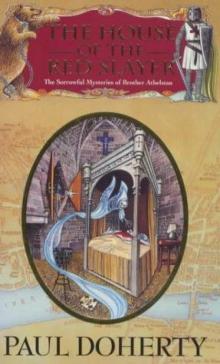 House of the Red Slayer smoba-2
House of the Red Slayer smoba-2 The Gallows Murders
The Gallows Murders The Straw Men
The Straw Men The Great Revolt
The Great Revolt The Rose Demon
The Rose Demon By Murder's bright light smoba-5
By Murder's bright light smoba-5 Templar
Templar Murder Most Holy
Murder Most Holy The House of Shadows
The House of Shadows A Brood of Vipers srs-4
A Brood of Vipers srs-4 Song of a Dark Angel hc-8
Song of a Dark Angel hc-8 Satan in St Mary hc-1
Satan in St Mary hc-1 Mathilde 01 - The Cup of Ghosts
Mathilde 01 - The Cup of Ghosts The Anger of God smoba-4
The Anger of God smoba-4 Isabella and the Strange Death of Edward II
Isabella and the Strange Death of Edward II The Midnight Man ctomam-7
The Midnight Man ctomam-7 The Assassin's Riddle
The Assassin's Riddle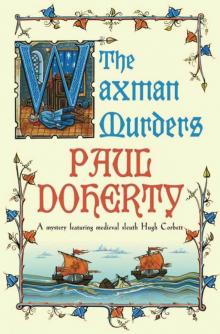 Hugh Corbett 15 - The Waxman Murders
Hugh Corbett 15 - The Waxman Murders Bloodstone smoba-11
Bloodstone smoba-11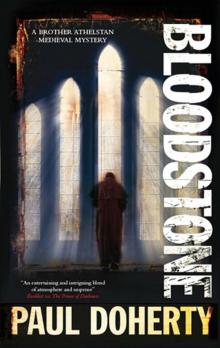 Bloodstone
Bloodstone The Gallows Murders srs-5
The Gallows Murders srs-5 The Midnight Man
The Midnight Man A Brood of Vipers
A Brood of Vipers The Templar Magician
The Templar Magician Hugh Corbett 11 - The Demon Archer
Hugh Corbett 11 - The Demon Archer Hugh Corbett 14 - The Magician's Death
Hugh Corbett 14 - The Magician's Death Candle Flame
Candle Flame The Nightingale Gallery smoba-1
The Nightingale Gallery smoba-1 The Anger of God
The Anger of God The Book of Fires
The Book of Fires Prince of Darkness hc-5
Prince of Darkness hc-5 The House of Crows smoba-6
The House of Crows smoba-6 The Grail Murders
The Grail Murders By Murder's Bright Light
By Murder's Bright Light House of the Red Slayer
House of the Red Slayer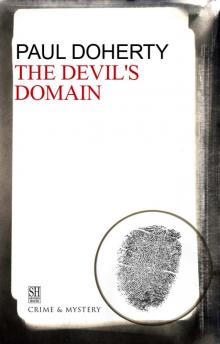 The Devil's Domain
The Devil's Domain The Relic Murders srs-6
The Relic Murders srs-6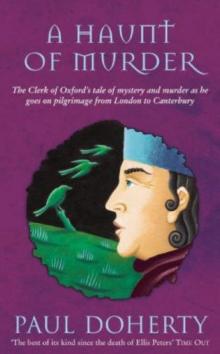 A haunt of murder ctomam-6
A haunt of murder ctomam-6 The Straw Men smoba-12
The Straw Men smoba-12 Hugh Corbett 06 - Murder Wears a Cowl
Hugh Corbett 06 - Murder Wears a Cowl An Ancient Evil (Canterbury Tales Mysteries)
An Ancient Evil (Canterbury Tales Mysteries) The Grail Murders srs-3
The Grail Murders srs-3 The Fate of Princes
The Fate of Princes The poisoned chalice srs-2
The poisoned chalice srs-2 Hugh Corbett 12 - The Treason of the Ghosts
Hugh Corbett 12 - The Treason of the Ghosts Hugh Corbett 13 - Corpse Candle
Hugh Corbett 13 - Corpse Candle The Season of the Hyaena (Ancient Egyptian Mysteries)
The Season of the Hyaena (Ancient Egyptian Mysteries) The White Rose murders srs-1
The White Rose murders srs-1 The Devil's domain smoba-8
The Devil's domain smoba-8 A Pilgrimage to Murder
A Pilgrimage to Murder Roseblood
Roseblood The Relic Murders
The Relic Murders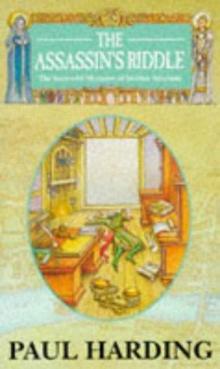 The Assassin's riddle smoba-7
The Assassin's riddle smoba-7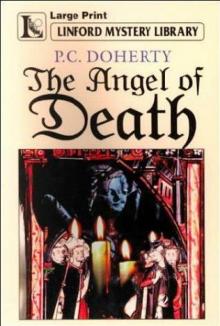 Angel of Death hc-4
Angel of Death hc-4 Dark Queen Rising
Dark Queen Rising The Nightingale Gallery
The Nightingale Gallery The House of Crows
The House of Crows Spy in Chancery hc-3
Spy in Chancery hc-3